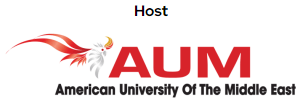REIMAGINE NEWSLETTER: ISSUE 3
REIMAGINE NEWSLETTER: ISSUE 4
Over the next six months – between now and the closing of the 2017 Reimagine Education Awards application period – we expect to receive over 1,000 applications to our 16 award categories. The majority will, if last year’s experience is instructive, be of high-quality, coming from innovative startups, world-class universities, seasoned entrepreneurs, and leading teachers. This being the case, we anticipate that the competition for each of our award categories will become ever-fiercer this year.
Yet one of our 1000+ applications will succeed in winning our most prestigious Oscar of Education – the Reimagine Education Overall Award, and we’re keen to demystify the process as much as possible. Our past winners haven’t achieved alchemy: there are identifiable things that an applicant can do to enhance their chances of catching our judges’ eye. With that in mind, here’s a six-step guide to submitting a top-quality application, with insights taken from the application of our 2015 winner, Osmosis:
- Outline your objective clearly. Osmosis’s opening line, in the ‘Project Objective’ section, read: “Osmosis: Knowledge Diffusion is designed with a simple goal in mind: make Medical School easier.” Though not containing the detail necessary to explain precisely how they intended to do so, this line immediately identifies a target audience, and easily-inferred expected outcome (improved attainment among medical students). All projects should be able to identify their project goal in one line, and stating so explicitly and clearly in the opening line avoids the type of ambiguity disliked by our judging panel.
- Provide hard figures. Osmosis’s submission provided clear evidence of their reach and their impact on learners. Reimagine Education is a competition designed to, above all, reward those projects that are having a clear positive impact on learners worldwide. Osmosis foregrounded the fact that their platform was being used by 29,000 students across 300 medical schools. These figures are impressive, certainly, but hiding them in the middle of an application, or being vague about the precise amount (‘user numbers are growing’) yields considerable disadvantage.
- Contextualize your figures. This is the most important point thus far. Osmosis noted in their application that “students who used Osmosis for 3+ months scored an average of a 247 on the USMLE Step 1 exam“. One common feature of unsuccessful Reimagine Education applications, however, is that they go no further than this. They simply provide a figure without context or comparison, and expect it to stand alone. Osmosis immediately followed up by noting that the national average for this exam was 230. This simple comparison makes it clear that there is a disparity in outcome between Osmosis users, and the current status quo.However, of course, Osmosis could have done even better here. They don’t speak about confounding variables that might be the source of that disparity in impact: it might be that more motivated learners are the type to seek out, and use, for an extended period of time, an app like that provided by Osmosis – and more motivated learners are likely to score higher than the average anyway, for obvious reasons. Truly impressive would have been the link to a study that proved that a large proportion of the disparity in outcome was due to Osmosis. One example way of doing so would be to compare the performance of Osmosis users to non-Osmosis users, while controlling for amount of time studied (both the Osmosis-using group and the control group should spend the same amount of time per week studying), initial performance (both groups should start from broadly similar USMLE scores), and other relevant factors.The key takeaway, then, is that figures mean nothing in isolation: the more you can do to prove that (a) your project leads to an improvement in learner outcomes, and (b) that that improvement is, with as close to certainty as possible, the result of your project or product, the more likely you are to succeed.
- Have clear growth targets. It doesn’t necessarily matter what they are, but scalability is a key aspect of the Reimagine Judging Criteria. Osmosis clearly stated their intention to create a similar platform for Nursing students (thus demonstrating scalability to different subjects), while also identifying clear action points for increasing, refining, and improving the content already available. The targets, or next steps, can be proportional. Conducting further research is a valid Next Step, as is upscaling from 50,000 users to 150,000, as is upscaling from 15 students partaking in an initiative to 45. The important factors, again, are precision and clarity.
- Avoid irrelevant content. Too often, Reimagine projects begin with a long preamble about ‘how education is changing’, typically at ‘an unprecedented rate’. Others note that ‘current pedagogies are inadequate’ – that the writer believes this is made obvious by the fact that they are submitting a Reimagine application. Some write that the world is facing ‘great challenges’ and that the world of education needs to ‘be prepared’. Such platitudes are seldom, if ever, relevant content. Osmosis didn’t waste valuable space in this way: they immediately delineated an objective, and the ways in which they intended to acheive that objective.Some context is relevant, of course. Explaining a specific ‘great challenge’ can be useful. For example, beginning a project by writing that unemployment in one’s town is higher than the national average, and remaining static, is relevant for a project that is attempting to improve student employabiity. Similarly, noting that a tiny proportion of ed tech startups focus on improving essay-structuring is valuable content if one’s project is a program designed to teach students how to construct cohesive essays. In short: good context involves speedily identifying the specific problem(s) that is being resolved by your work: here, again, is Osmosis’s clear, concise example:”…medical students are required to study, digest, and retain colossal amounts of content, and that this can be daunting for even the ablest of students. It recognizes that there are very few evidence-based approaches to learning for medical students, and many may struggle to effectively separate these swathes of information into a digestible format when attempting to revise and/or understand.“
- Research your project. We recognize that conducting high-quality academic studies into the efficacy of one’s project may be either difficult or irrelevant for many projects. However, where possible, evidence that one has aimed to identify the way in which their project is improving outcomes for teachers, learners, or administrators will be viewed favourably. Again, Osmosis noted that:”Osmosis has published peer-reviewed papers (www.osmosis.org/institutions) and is actively engaged in research, including a cross-institutional study with UIC and UCF on its intelligent formative assessment system funded by a Stemmler Grant from the National Board of Medical Examiners.”This type of research is desirable, but it is not always necessary for applicants to engage in research typical of the academic community. However, surveys into user experience (especially where comparisons can be made), and other data than can prove the value of one’s work will be one excellent way of convincing our judging panel that one’s submission deserves rewarding.

